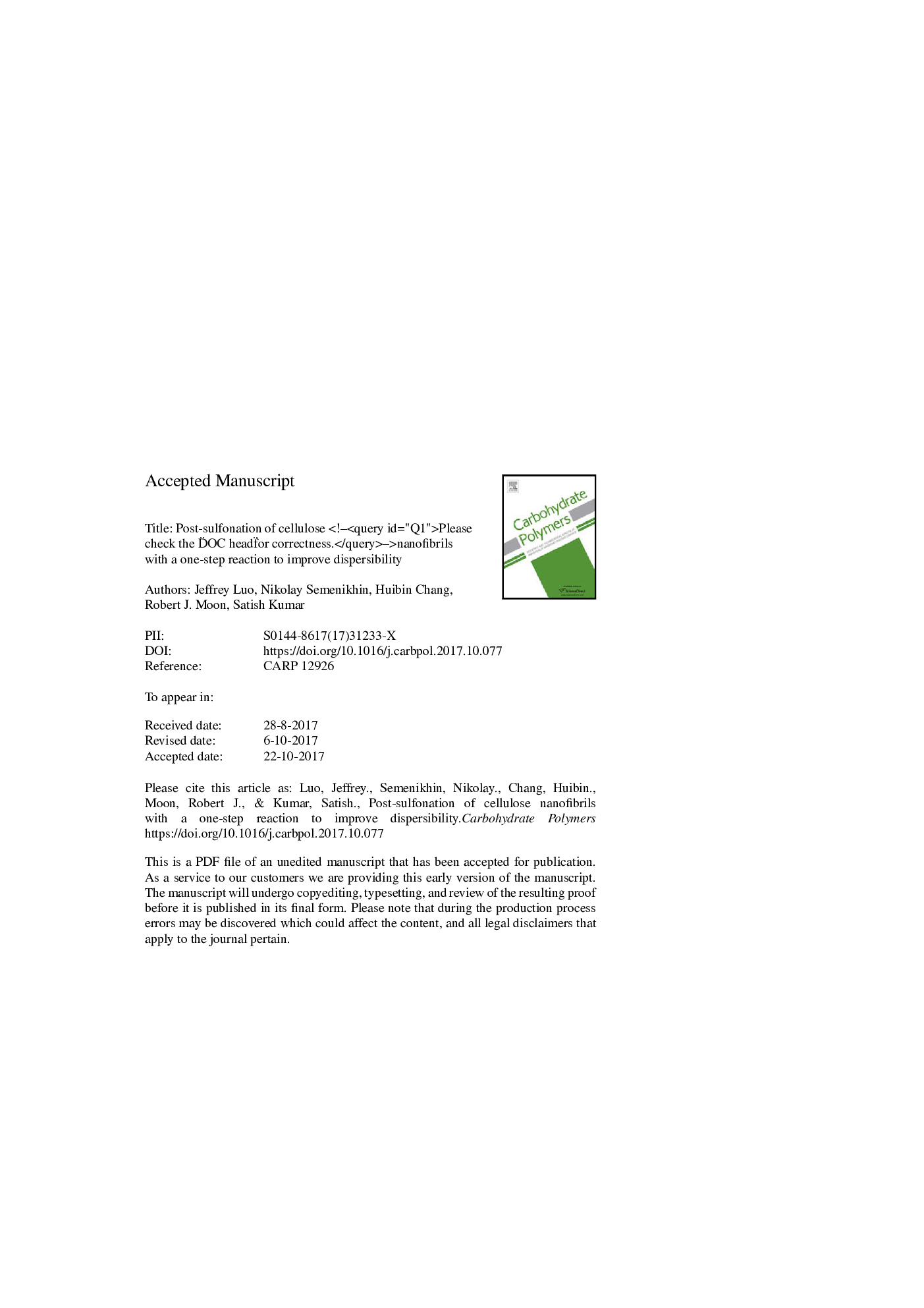| Article ID | Journal | Published Year | Pages | File Type |
|---|---|---|---|---|
| 7784474 | Carbohydrate Polymers | 2018 | 22 Pages |
Abstract
Cellulose nanofibrils (CNF) were sulfonated and the dispersion quality was compared to unfunctionalized and 2,2,6,6-tetramethylpiperdine-1-oxyl radical (TEMPO) post-oxidation treatment of existing CNF (mechanically fibrillated pulp). A post-sulfonation treatment on existing CNF in chlorosulfonic acid and dimethylformamide (DMF) resulted in sulfonated CNF that retained a fibril-like morphology. There was a small decrease in the cellulose crystallinity index for the sulfonated CNF, but this was much lower than the reported regioselective oxidative bisulfite pretreatment method used to make sulfonated CNF. The current approach was extremely quick, and 5Â min of reaction time was sufficient to result in significant improvements in dispersibility compared to unfunctionalized CNF. The sulfonated CNF and TEMPO oxidized CNF had better dispersibility compared to the unfunctionalized CNF when dispersed in DMF and water, and in many cases the sulfonated CNF had better dispersibility than the TEMPO CNF. It was found that when CNF was dispersed in DMF the TEMPO CNF formed carboxyl dimethylammonium groups, while the sulfonated CNF formed formate groups.
Related Topics
Physical Sciences and Engineering
Chemistry
Organic Chemistry
Authors
Jeffrey Luo, Nikolay Semenikhin, Huibin Chang, Robert J. Moon, Satish Kumar,
